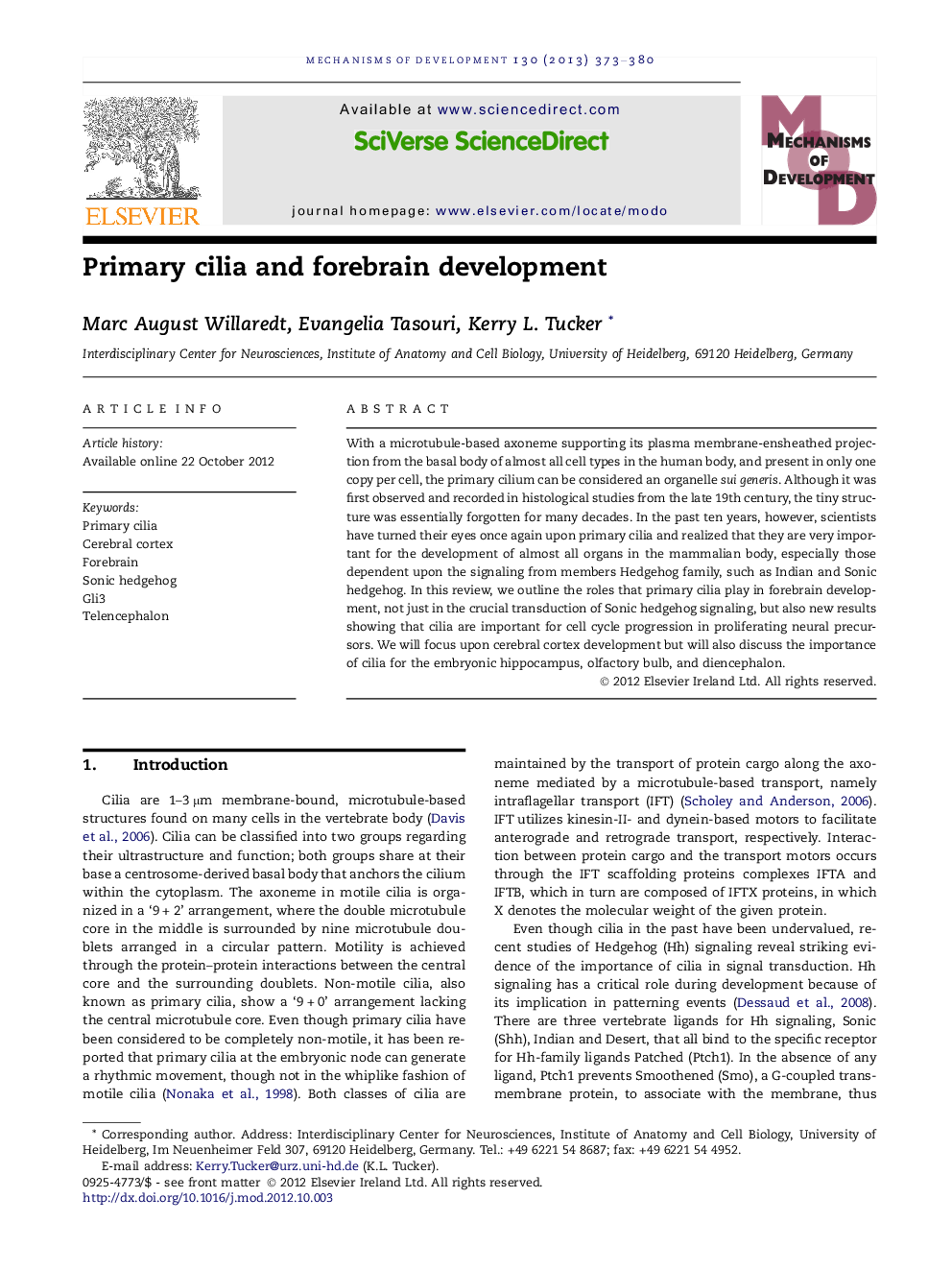| Article ID | Journal | Published Year | Pages | File Type |
|---|---|---|---|---|
| 2194635 | Mechanisms of Development | 2013 | 8 Pages |
With a microtubule-based axoneme supporting its plasma membrane-ensheathed projection from the basal body of almost all cell types in the human body, and present in only one copy per cell, the primary cilium can be considered an organelle sui generis. Although it was first observed and recorded in histological studies from the late 19th century, the tiny structure was essentially forgotten for many decades. In the past ten years, however, scientists have turned their eyes once again upon primary cilia and realized that they are very important for the development of almost all organs in the mammalian body, especially those dependent upon the signaling from members Hedgehog family, such as Indian and Sonic hedgehog. In this review, we outline the roles that primary cilia play in forebrain development, not just in the crucial transduction of Sonic hedgehog signaling, but also new results showing that cilia are important for cell cycle progression in proliferating neural precursors. We will focus upon cerebral cortex development but will also discuss the importance of cilia for the embryonic hippocampus, olfactory bulb, and diencephalon.
► We review the role that primary cilia play in forebrain development. ► We discuss control of proliferation by Sonic hedgehog and Gli3 in the cerebrum. ► We outline contrasting findings of cerebral patterning in various ciliary mutants.
